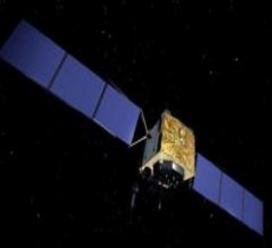Small Jammers Present Big Problems for GPS
This is a key year for global navigation satellite systems (GNSS): in 2011, satellites are being launched in Europe with the Galileo system, in Russia with the Global Navigation Satellite System (GLONASS), and in China with the Compass/Beidou system, reported Karen Van Dyke, principle technical advisor for global positioning systems (GPS) at Volpe and director of the Office of Positioning, Navigation, and Timing at the U.S. DOT's Research and Innovative Technology Administration.
Some estimates venture that there are more than one billion users of GPS worldwide, Van Dyke said.
However, an item that sells for as little as $30 has already caused big problems for this rapidly growing technology and highlights the vulnerability of GPS.
Sold as “privacy detectors,” GPS jammers block GPS civil frequencies and are often used by drivers of company or fleet vehicles to prevent tracking, said Van Dyke, who spoke at Volpe on September 27, 2011. Although GPS jammers are illegal to use in the United States, these low-powered, readily available devices are finding a growing market here and recently caused a stir at New Jersey’s Newark Liberty International Airport.
A little over a year ago, the Federal Aviation Administration (FAA) was testing and evaluating a new GPS-based landing system at Newark Airport and discovered disruptions at the reference receivers. It took the FAA and the Federal Communications Commission (FCC) months to discover the source of the interference: a driver on the nearby New Jersey Turnpike was passing by daily with an inexpensive GPS jammer in his truck, said Van Dyke.
“They’re prevalent and it’s a very difficult problem,” said Van Dyke, noting that the GPS-based landing system at Newark still has not gone operational.
These GPS jammers are just one of a number of types of intentional and unintentional interferences that challenge existing and emerging satellite navigation systems.
“As we move to more dependence on GPS and GNSS, we do need to be careful to not become too over-reliant on the technology,” Van Dyke cautioned. “If we’re going to integrate use of them into safety-of-life systems, we need to make sure that they have accuracy, availability, [and] integrity.”

